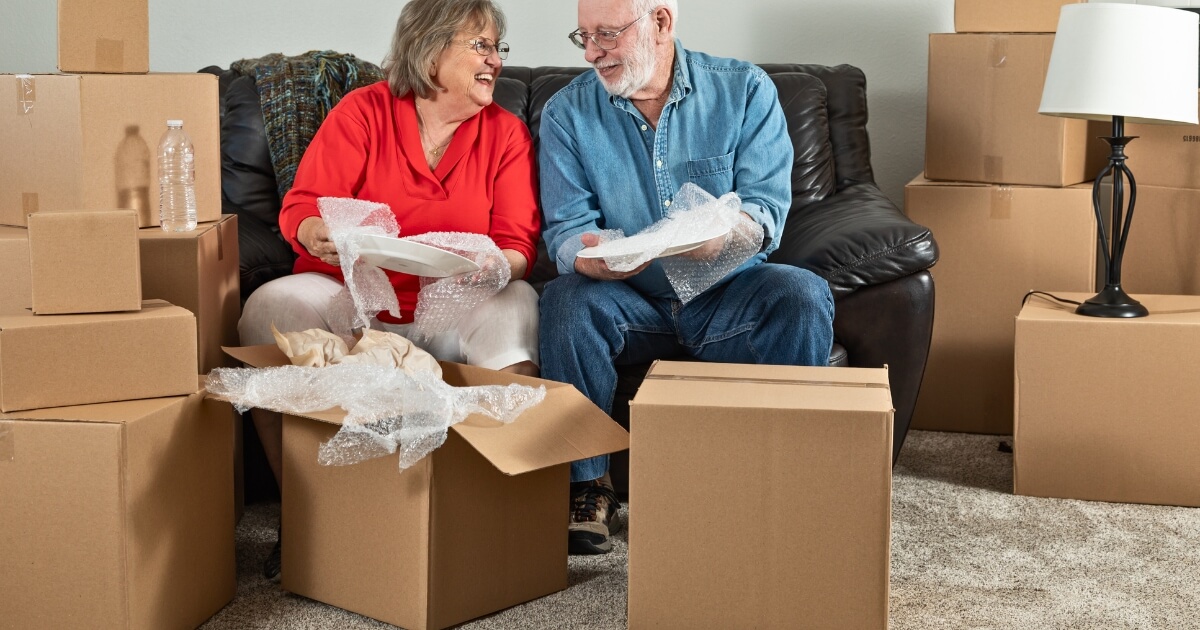How to downsize when moving: 10 tips for minimising & decluttering
Moving can be a stressful time that requires a lot of planning and preparation. One of the biggest challenges that come with moving is downsizing. Deciding what to keep and what to get rid of can be a daunting task, especially if you have accumulated a lot of belongings over the years.
It is, however, a good idea to make the effort to downsize when moving. Not only will it save you money in the long run but you get the added benefit of income from the sale of your unused goods.
And downsizing doesn’t need to be hard. In this blog post, we, your preferred interstate removalists will share with you 10 tips for minimising and decluttering before your big move!
How to downsize when moving - step by step
1. Start early
Downsizing can be a time-consuming process, so it's essential to start early to give yourself enough time to go through your belongings.
Keep in mind your moving date as arranged with your quality interstate removalist and leave yourself plenty of time beforehand so that you have completed your decluttering before that date.
Create a timeline for decluttering different areas of your home before the moving date. This will help you to stay on track, organised and focussed.
2. Sort everything
Create four piles of items:
- Keep
- Sell
- Donate
- Discard
Sort everything in every room into each one of these piles and make sure to work through them systematically. This might include furniture too, as large items are what take up room in the removalist trucks and end up saving you money as you reduce your items. Keep in mind less stuff means less stress for you and less you need to spend on moving it.
3. Use a checklist
A checklist will help to ensure that you don't miss anything and that you can track your progress. Your checklist can incorporate a timeline for the move to also keep you on track and highlight essential service contact dates.
Make a list of each area or room in the house and tick them off as you work through sorting the room's contents into piles to keep, sell, donate or throw away. Consider getting a dumpster delivered if you know you might have a lot of damaged or useless gear to get rid of.
4. Consider your new home
Think about the space you will have at your new home and whether everything you own will fit. Will this new space redefine and benefit your life? Be practical about what you need and what you can let go of.
When it comes to big items such as furniture, measure them before deciding whether to bring them along. This can be a great money-saving exercise that will benefit you in the long run.
5. Sell unwanted items
If you have items that are still in good condition, consider selling them. Online marketplaces like Facebook Marketplace or Gumtree and other online sales sites and second-hand shops will allow you to earn a little or a lot of extra cash that can go towards moving expenses or fresh furniture at your new residence.
Another alternative is having a garage sale for these items which can mean quick cash for you.

6. Recycle what you can
Recycling is good for the environment and can help you declutter your home. Check with your local op shops like Lifeline or Vinnies and others to see what they can and cannot recycle or sell and what you can donate.
You can also recycle your old electronics and appliances such as computers, TVs, and phones but you may need to check with your council to see what you can recycle and where. Sometimes electronics require special drop-off locations.
7. Get help
If the thought of decluttering your home seems overwhelming, it can be helpful to have someone to assist. Recruit friends or family members to help you go through your belongings. While they are there helping, you might be able to hand down items that they may treasure themselves.
You might be able to get live-in family members to sort their own possessions into the four piles too, to save you the effort and so relieve yourself of some of the stress. They can also offer a different perspective, making the process easier and helping you see uses of items you may not have thought of.
8. Reduce repetitive items
Think about how many of one item you need, such as plates or cups. A good rule of thumb is that if you haven't used an item in the previous year you are unlikely to use it in the future so dispose of it. It's better to have a few high-quality items than many mediocre ones.
9. Keep sentimental items separate
Not everything has to be thrown away. When it comes to sentimental items such as photos and family heirlooms, keep them separate and consider storing them in a safe, secure place.
It may be that you might need to carefully bundle them in blankets or wrap them to protect them in transit. Ensure that you mark them clearly as fragile and label them with details of where they are to go in the new residence.
10. Make use of storage options
Storage options such as rented self-storage units can be helpful when it comes to downsizing. They are ideal for storing items that you can't bear to be parted with but don't have room for in your new home.
Ready to get started?
Downsizing before moving can seem overwhelming, but it doesn't have to be. By following these ten tips, you can minimise and declutter your belongings and make your move as seamless as possible.
Remember that downsizing prior to your interstate removalist arriving is an opportunity to start fresh and only bring with you the items that are really important to you in addition to saving you money. Your interstate removalist is there to help so contact us if you have any queries about your move and while we’re at it, good luck with your move!

